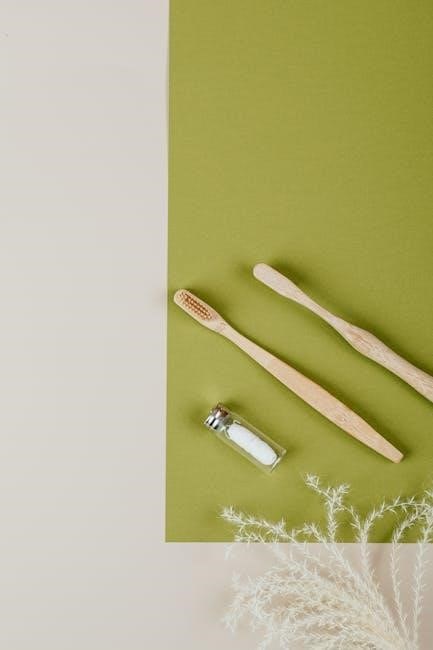Dental shade guides are essential tools in dentistry, helping professionals match tooth colors accurately for restorations; They ensure natural aesthetics and functional outcomes, enhancing patient satisfaction.
1.1 Definition and Purpose
Dental shade guides are standardized tools used to match tooth colors accurately for restorative procedures. They consist of a series of tabs representing various shades, organized by hue, chroma, and value. The primary purpose is to ensure prosthetics, implants, and veneers blend seamlessly with natural teeth, achieving both aesthetic and functional harmony. This precise matching enhances patient satisfaction and clinical success in dental treatments.
1.2 Importance in Dentistry
Dental shade guides are vital for achieving aesthetically pleasing and functional dental restorations. They enable precise color matching, ensuring prosthetics, veneers, and implants blend naturally with surrounding teeth. Accurate shade selection enhances patient satisfaction, avoids costly remakes, and maintains clinical excellence. It bridges the gap between art and science in dentistry, ensuring optimal outcomes for both appearance and oral health.

Understanding Tooth Color and Shade
Tooth color and shade are critical in dentistry, impacting aesthetic outcomes. They are influenced by enamel transparency, dentin hue, and external stains, guiding precise shade matching.
2.1 The Science of Tooth Color
Tooth color is determined by the interaction of light with enamel and dentin layers. Enamel translucency and dentin’s chromatic properties create unique hues. Chromophores and pigmentation influence shade, while light scattering enhances color perception. Understanding these optical properties aids in precise shade matching, ensuring natural aesthetics in dental restorations.
2.2 Factors Influencing Tooth Shade
Tooth shade is influenced by enamel translucency, dentin color, and chroma. Aging, lifestyle, and dietary habits can cause discoloration. Environmental factors, health conditions, and dental procedures also impact shade. Accurate assessment requires understanding these variables to match restorations seamlessly, ensuring natural aesthetics and patient satisfaction in clinical applications.
The VITA Classical Shade Guide
The VITA Classical Shade Guide is a widely used system for tooth shade matching, aiding in achieving natural aesthetics in restorations and prosthetics.
3.1 History and Development
The VITA Classical Shade Guide was introduced in the 1950s, revolutionizing tooth shade matching. Developed by VITA Zahnfabrik, it set a standard for consistent, precise color reproduction, enhancing dental aesthetics globally.
3.2 Arrangement and Classification
The VITA Classical Shade Guide is systematically arranged into groups based on tooth color’s value, chroma, and hue. Organized by brightness (value) and saturation (chroma), shades are categorized into four main groups. Each tab represents a specific shade, making it easier for dentists to select the closest match. This classification system ensures precise communication between clinicians and laboratories, enhancing the accuracy of dental restorations.

Digital Dental Shade Guides
Digital dental shade guides use advanced technology for precise color matching, offering real-time shade analysis and improved accuracy compared to traditional methods. They streamline the process.
4.1 Advancements in Shade Matching Technology

Recent advancements in shade matching technology include digital spectrophotometers and AI-powered tools. These devices capture precise tooth color data, reducing human error. They offer real-time results, enhancing accuracy and efficiency in dental procedures. Digital systems also integrate with CAD/CAM software, ensuring seamless restoration design. This technology improves communication between dentists and labs, leading to better aesthetic outcomes for patients. It represents a significant leap forward in modern dentistry practices and patient care.
4.2 Benefits Over Traditional Shade Guides
Digital shade guides offer superior accuracy and efficiency compared to traditional methods. They minimize human error, providing precise color matching. Digital tools also save time, as they quickly analyze and store data. Additionally, they reduce variability between clinicians, ensuring consistency. Integration with CAD/CAM systems enhances restoration design and fabrication. These technologies improve patient outcomes by delivering more natural and aesthetically pleasing results, making them a valuable advancement in modern dental practices.
The Shade Selection Process
The shade selection process involves determining tooth value, selecting chroma, and identifying hue for accurate color matching, ensuring natural and aesthetically pleasing dental restorations.
5.1 Steps for Accurate Shade Matching
Accurate shade matching involves a systematic approach: calibrate tools, assess teeth under natural light, use shade guides methodically, compare with adjacent teeth for harmony, document the shade, and verify consistency. This ensures precise color selection for natural aesthetics and functional outcomes, enhancing patient satisfaction and clinical success in dental restorations.
5.2 Common Challenges and Solutions
Common challenges in shade matching include poor lighting conditions, human error, and tooth dehydration. Solutions involve using controlled lighting, regular calibration of tools, and applying rinsing agents to maintain tooth moisture. Proper training and documentation also enhance accuracy, while digital tools can improve consistency. Addressing these challenges ensures reliable shade selection, leading to better aesthetic and functional outcomes for patients.
The Importance of Accuracy in Shade Matching
Accuracy in shade matching ensures natural aesthetics and functional outcomes, enhancing patient satisfaction. Proper color alignment boosts confidence and clinical success, making it a cornerstone of modern dentistry.
6.1 Impact on Aesthetic and Functional Outcomes
Accurate shade matching significantly impacts both aesthetic and functional outcomes. It ensures restorations blend seamlessly with natural teeth, preserving a patient’s smile and confidence. Mismatches can lead to poor aesthetics, affecting self-esteem. Functionally, precise shading supports proper occlusion and chewing efficiency. The psychological impact of a natural-looking smile cannot be understated, as it influences overall well-being and satisfaction with dental care. Thus, precision in shade selection is vital for both visual harmony and functional success.
6.2 Patient Satisfaction and Clinical Success
Patient satisfaction is deeply linked to accurate shade matching, as it directly affects the appearance of restorations. When shades are well-matched, patients feel confident in their smiles, leading to higher satisfaction rates. Clinically, precise shade selection ensures better integration of restorations, reducing the need for adjustments and enhancing long-term outcomes. This combination of aesthetic appeal and functional success fosters trust in dental care, ultimately contributing to a positive patient experience and successful clinical results.
Maintenance and Updates of Shade Guides
Regular calibration and proper care of dental shade guides are crucial for maintaining accuracy. Cleaning and storing them correctly ensures longevity and consistent shade matching results over time.
7.1 Regular Calibration and Care
Regular calibration and proper care of dental shade guides are essential to ensure accuracy and longevity. Calibration should be performed daily or before critical procedures to maintain consistency. Cleaning the guides with soft cloths and avoiding harsh chemicals prevents damage. Storage in a dry, protected environment, away from direct sunlight, helps preserve color accuracy. Following manufacturer guidelines ensures optimal performance and extends the lifespan of the shade guide, delivering reliable results for precise shade matching.
7.2 Staying Updated with Industry Standards
Staying updated with industry standards is crucial for maintaining accuracy and relevance in dental shade matching. Manufacturers regularly release updates to reflect advancements in materials and techniques. Dental professionals should subscribe to newsletters, attend workshops, and participate in continuing education to stay informed. Adhering to updated standards ensures compliance with best practices, enhances patient outcomes, and maintains credibility in clinical procedures. Regular updates also incorporate feedback from clinicians, improving the practicality and effectiveness of shade guides in modern dentistry.

The Future of Dental Shade Guides
The future of dental shade guides lies in advanced technologies like AI and machine learning, enabling precise, real-time shade matching and integration with digital dentistry tools for enhanced outcomes.
8.1 Emerging Technologies in Shade Matching
Emerging technologies in shade matching include advanced digital tools and AI-powered systems. These innovations enable precise color analysis, reducing human error and enhancing accuracy. Digital shade matching devices use cameras and algorithms to capture and compare tooth shades in real-time, offering faster and more reliable results. Additionally, 3D printing and virtual simulations are being integrated to create customized restorations with optimal aesthetic outcomes, revolutionizing the field of dentistry.
8.2 Integration with Digital Dentistry
Digital dentistry seamlessly integrates with shade guides through advanced tools like CAD/CAM systems and intraoral scanners. These technologies enable precise shade matching and restoration design. 3D printing and digital impressions further enhance accuracy, streamlining workflows. Integration allows real-time data synchronization, improving communication between clinicians and labs. This convergence fosters consistent, high-quality outcomes, revolutionizing dental practices and elevating patient satisfaction through modern, efficient solutions.